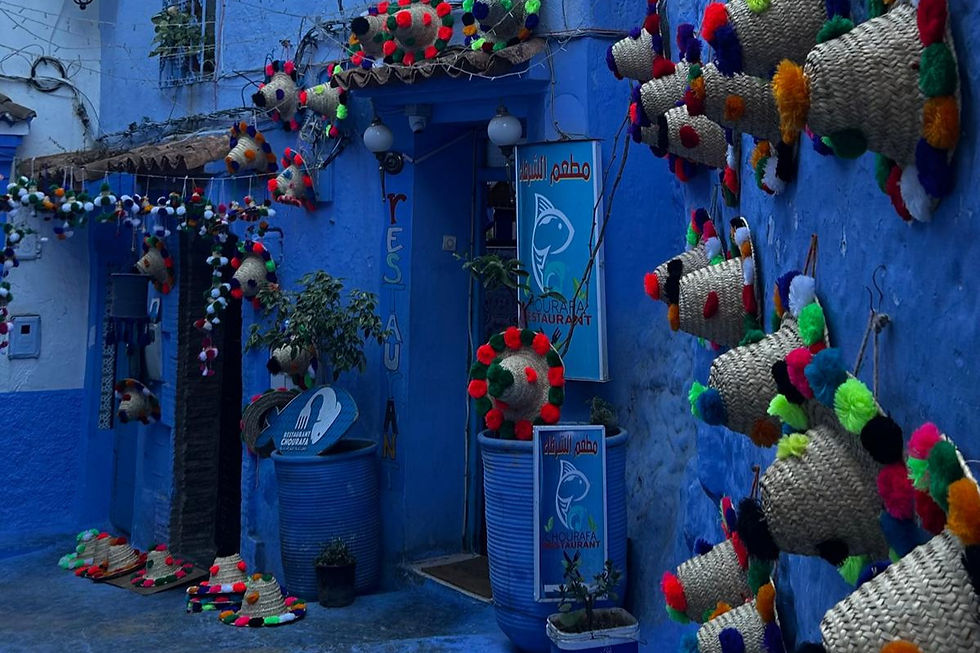Morocco
- Panna
- 1d
- 4 min read
Entry requirements
Morocco is a safe destination, where usually European citizens can travel without a visa, and registration is not required. The passport must be valid for 3 months from the date of departure from the country. You cannot travel with an ID card.
Upon entry, they ask us what our purpose is, where we will be staying, and how long we want to stay in the country. They did not ask me for my outbound flight ticket. We get a stamp in our passport both when we leave and when we enter, which proves that we are legally in the country.
Communication and payment
Everywhere I went in Morocco, I found everyone to be very kind and helpful, selflessly giving good advice and information, often unsolicited.
You won't be able to make yourself understood in English everywhere, but Spanish is spoken perfectly in the north and French in other parts of the country.
Many places don't accept cards, so it's a good idea to exchange money at the airport. I brought euros and some US dollars from spring, and I was able to exchange them for Moroccan dirhams at a completely fair exchange rate. Later, if necessary, you can withdraw money from your Revolut card at any ATM. I haven't tried any other cards.
Morocco transportation
The transportation within the country is particularly good, the railway is of a completely European standard, high-speed trains run between the larger cities (Tangier- Rabat- Casablanca- Marrakesh). The stations are nice and clean, as are the train cars, I bought the train ticket from the machine at the station. The language could be set to English, and you could still buy a ticket about half an hour before the train left.
Some interior areas can only be reached by bus or grand taxi if you don't want to rent a car.
The grand taxi was designed for longer distances, while the petit taxi is available for travel within the city. With the latter, you also need to agree on the fare in advance to avoid unpleasant surprises. The fare was basically cheap, and you could only pay in cash. Don't expect air conditioning in the car, they prefer the window-operated option. The drivers are polite, but they typically don't speak English.
The Indrive app also works , I downloaded it, but in the end I couldn't use it. The system is that you indicate your destination, then you have to offer an amount (the app suggests something, but you can deviate from this), then someone either accepts your offer or not. You can find unofficial drivers on this app, practically anyone can offer to take you.
Meals, tap water
You can't drink tap water, I also used mineral water to brush my teeth. By the way, I didn't overdo the precautions; I read that you shouldn't ask for ice in your drink, and they don't recommend choosing salad because it's washed with tap water. I didn't pay attention to these, but I didn't have any problems. If you have a sensitive stomach, it might be worth taking a probiotic, but I think the special spices might be more of a problem, the hygiene isn't bad at all, provided of course that you don't want to eat exclusively at street vendors.
Moroccan food is very delicious, skewers made of minced beef or lamb were my favorite, of course, besides tajine, which you can read about in detail here .
If you're not a fan of Moroccan spices, you can of course find simple European dishes, and the most famous fast food chains are also represented in the larger cities. I prefer to try the local flavors, but I've seen many foreigners play it safe.





Accommodation / riad
If you can, stay in a riad at least once, as it is a great experience in itself. You can also rent a smaller riad and have the entire building to yourself.
Why is it worth it?
Moroccan riads are not only beautiful accommodations, but also an important part of the country's architectural heritage. Their origins can be traced back to the courtyard houses of the Islamic world, which spread in North Africa from the 8th to the 9th centuries. The center of the riad is always the inner garden or courtyard, where there is a fountain, perhaps orange and lemon trees, and shady seating areas, and sometimes a small pool. An openable roof is often placed over the inner courtyard, so that the air circulates well. The house is almost completely closed from the outside, practically nothing can be seen from the street, thus protecting the family's privacy and protecting the house from the heat and sun. The decorations reflect the most beautiful traditions of Moroccan craftsmanship: colorful mosaics, stucco, carved wooden doors and wrought iron railings. Often the gate itself is a masterpiece.
Today, with many old riads now operating as accommodation, travelers can experience this architectural world first-hand. Stepping into a riad is like stepping into another era: a modest, unassuming façade on the outside, and an elegant courtyard and stylish furnishings on the inside. Staying in a riad in Marrakech, Chefchaouen or Fes not only offers modern comforts, but also gives you an insight into how Moroccan families lived centuries ago. This unique architectural form not only preserves the past, but is also a living part of Moroccan culture today. I think it’s a must-see. However, it’s worth noting that a typical riad has a lot of stairs and no elevator, so it’s not a good option for people with limited mobility.









Comments